

Francesco Borromini
1665-76
Note that these photographs were taken more than 20 years ago--before the facade was cleaned in 1992. Go here for 41 new images of both the exterior and interior (photographed in 2006). | ||
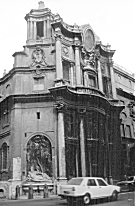 |
Two facadesThe main facade, with three bays, facing the street, and the second facade, a narrow bay at the corner with its own tower, were designed after the interior was completed. This small Baroque church, part of a monastery, uses the gigantic order enclosing a small order. (See Michelangelo's Palazzo dei Conservatori.) However, here the giant order does not serve to unify the two stories. Instead each story is equally important with contrasting elements in each story. |
|
The street facadeThe lower story has three bays, two outer concave bays and a convex center. The upper story has concave bays. Whereas the lower bays are united by the continuous entablature, the upper bays have an entablature in sections, the central one with the oval medallion swinging forward. Angels, asymmetrically placed, hold the medallion which has an onion-shaped crown. |
 |
|
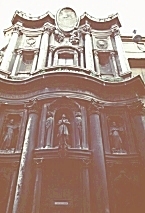 |
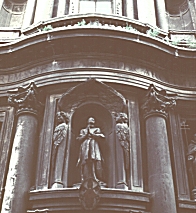 |
The door in the convex central bay is echoed by the convex window enframement in the upper story. A statue of St. Charles Borromeo, added later, occupies the lower story niche, which is echoed by the medallion in the upper story. Herms with angel heads and arched wings frame the niche. |
| The undulating movements and sculptural effects are characteristic of Baroque architecture. One of the most theatrical practitioners of the Baroque style, Borromini is said to have eliminated the corner in architecture. | 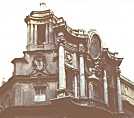 |
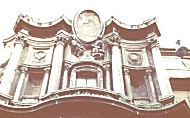 |
 Click here to return to places index.
Click here to return to places index.
 Click here to return to index of artists and architects.
Click here to return to index of artists and architects.
